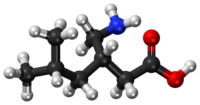
Photo from wikipedia
The Authors Reply We thank Dr. Finsterer for his comments pertaining to our article (1). We appreciate the opportunity to address his comments formally. The first concern was regarding the… Click to show full abstract
The Authors Reply We thank Dr. Finsterer for his comments pertaining to our article (1). We appreciate the opportunity to address his comments formally. The first concern was regarding the cardiopulmonary condition of this patient. Our patient experienced neither chest pain nor loss of consciousness until this sudden deterioration. Before cardiopulmonary arrest (CPA), electrocardiograms (ECGs) performed multiple times demonstrated a high left ventricular potential, but no PQor QTprolongation, arrhythmia, or significant ST-segment changes. The left ventricular ejection fraction was 66.0% despite diffuse thickening of the left ventricular wall on echocardiography. No abnormality was found on chest X-ray. The ECG monitor recorded no fatal arrhythmia just before the sudden deterioration. During and after cardiopulmonary resuscitation using adrenaline and sodium bicarbonate, ventricular fibrillation occurred frequently; however, we did not identify ventricular tachycardia or Torsade des Points on an ECG. Echocardiography did not detect atrial thrombus, asynergy, Takotsubo syndrome, or pericardial effusion. Chest computed tomography demonstrated neither pulmonary embolism nor aortic dissection. We could not conduct brain magnetic resonance imaging or electroencephalography after resuscitation because of the extremely unstable circulatory dynamics. The second concern was regarding the origin of acute renal failure (ARF). As the ARF with lactic acidosis preceded rhabdomyolysis, we disagree with Dr. Finsterer’s comment that rhabdomyolysis caused ARF. Both severe conditions can be primary symptoms of mitochondrial encephalopathy, lactic acidosis, and stroke-like episode and we were unable to clarify any other trigger. Accordingly, we noted in our case report that fatal ARF and rhabdomyolysis could occur suddenly even when the brain lesion shows a tendency to improve. The final concern was regarding the diagnosis of the mother of this patient. Her muscle pathology was not examined as she showed no muscle weakness. However, the diagnosis of the patient’s mother was definite because she had mitochondrial DNA mutations as well as a short stature, sensori-neural hearing disturbance, typical stroke-like attack, and high lactate and pyruvate levels in serum and cerebrospinal fluid.
Journal Title: Internal Medicine
Year Published: 2020
Link to full text (if available)
Share on Social Media: Sign Up to like & get
recommendations!